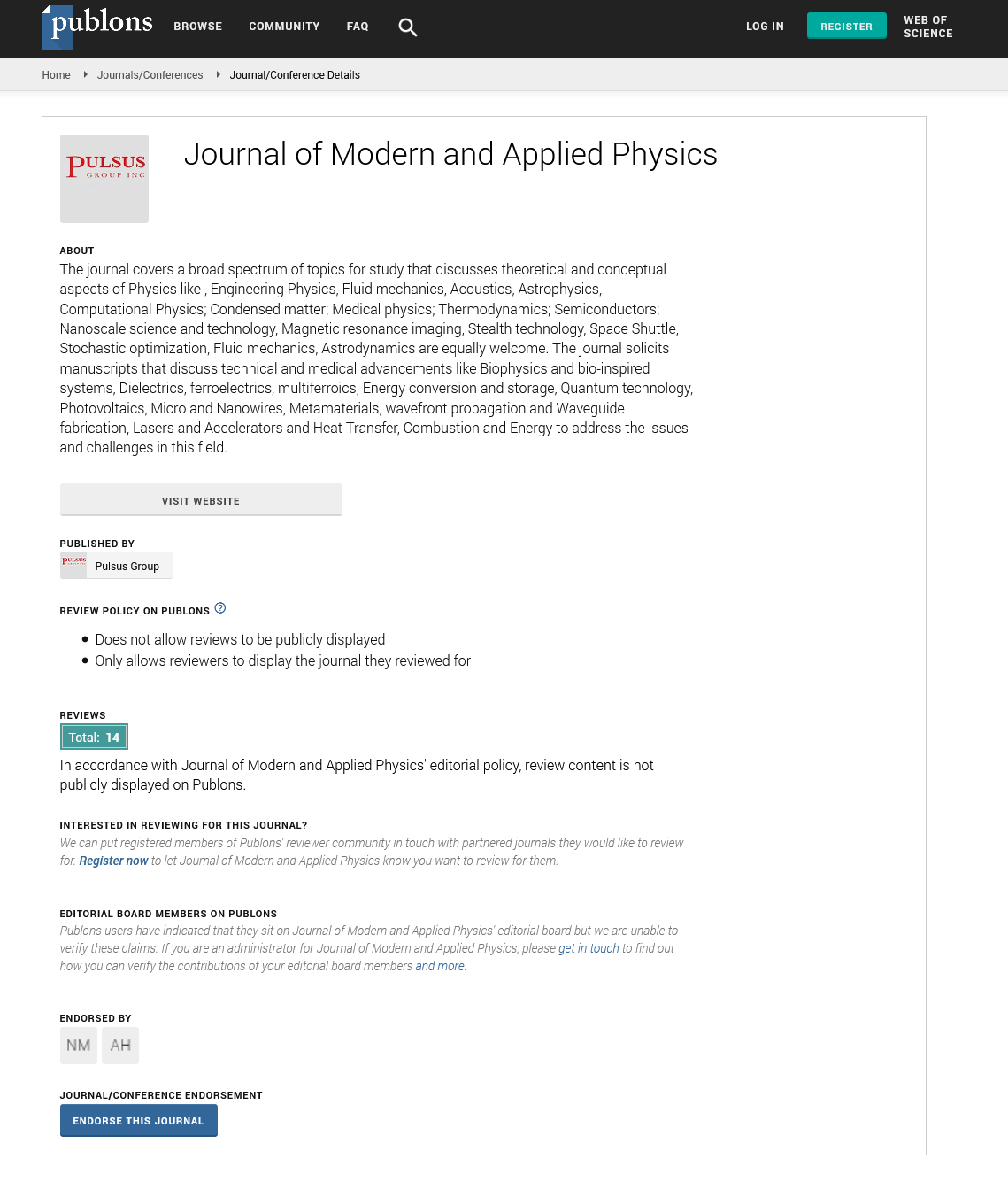The twelve commandments: An extension of szilard’s ten commandments
2 Department of Mathematics and Sciences, University of New Mexico, Gallup, USA, Email: fsmarandache@gmail.com
Received: 29-Nov-2017 Accepted Date: Dec 08, 2017; Published: 15-Dec-2017
Citation: Christianto V, Smarandache F. The twelve commandments: An extension of szilard’s ten commandments. J Mod Appl Phys. 2017;1(1):14-15.
This open-access article is distributed under the terms of the Creative Commons Attribution Non-Commercial License (CC BY-NC) (http://creativecommons.org/licenses/by-nc/4.0/), which permits reuse, distribution and reproduction of the article, provided that the original work is properly cited and the reuse is restricted to noncommercial purposes. For commercial reuse, contact reprints@pulsus.com
Abstract
In their pursuit of new theories, physicists often need a guideline like a lamp shedding light on their way. Such a guideline has been proposed by renowned Hungarian physicist Szilard, called “Szilard’s 10 commandments.” Here we add two more additional commandments, in the light of new critics to string theory and its variations like superstring and M-theory.
Introduction
There are numerous versions of the legend of the Commandments that God gave to Moses. A humorous version of this legend told that God came to Italian people first, and He asked: “Would you accept My commandments?” “Like what?” they asked Him. “Like: Thou shall not kill.” “Oh, no thank you, God. We cannot accept Your Commandment. We are Italian, and many of us are mafia here, then we often kill each other.” Then God came to French people, then He asked the same question: “Would you accept My commandments?” “Like what?” they asked Him. “Like: Thou shall commit adultery.” “Oh, no thank you, God. We cannot accept Your Commandment. We are French, and surely many of us like to do adultery.” Then God came to Israeli people, then He asked the same question: “Would you accept My commandments?” They asked Him: “How much is it?” God replied: “All are free.” Then they replied: “All right then, please give us ten.”
Another version of that legend told that there were originally more than the Ten Commandments that God gave to Moses. As Moses came down from Mount Sinai carrying the heavy stones upon which the words were written, some have said he stumbled and fell and the stones were smashed. Several of the tablets were broken beyond repair, and only ten of the commandments survived. The fragments of the missing and garbled commandments may have been rediscovered by a Hungarian, Jewish, atomic physicist named L. Szilard [1].
They are called “Szilard’s 10 commandments.” He wrote them in German with no thought, at the time, of publishing them. During Szilard’s lifetime, he was never happy with the attempts to translate the commandments into English, so they were never published while he was alive. After his death in 1964, Jacob Bronowski wrote them down in English as a remembrance for some of Szilard’s friends [1].
Here we add 2 more additional commandments, in the light of new critics to string theory and its variations like superstring and M-theory. Such critics to string theory came mostly from mathematicians, such as Sir Roger Penrose and Peter Woyt [2,3].
Now it seems worth to remind ourselves to a wisdom saying by Ronald Coase, a Nobel laureate in economics. He once remarked [4]:
“if you torture data long enough, it will confess to anything.”
For theoretical and mathematical physicists, data can be changed to be “geometry”, because most of them like geometry (especially supradimensionality in string theory, cf. Penrose).
Therefore, if we condense those criticism into one line, it would be as follows:
“if you torture geometry long enough, Nature will confess to anything.”
Therefore, our proposed 11th commandment is:
- Do not torture geometry, try to respect and learn from Nature.
As with the 12th commandment: we would like to add a rule that a scientist should not make a pact with Satan. This one refers to the so-called Faustian bargain in nuclear energy, which term has been advocated by the late Alvin Weinberg [5].
Below is the complete list of Szilard’s 10 commandments with our additional 11th and 12th commandments.
The 12 Commandments for Physicists
1. Recognize the relationships between things and the laws which govern men’s actions, so that you know what you are doing.
2. Direct your deeds to a worthy goal, but do not ask if they will achieve the goal; let them be models and examples rather than means to an end.
3. Speak to all others as you do to yourself, without regard to the effect you make, so that you do not expel them from your world and in your isolation, lose sight of the meaning of life and the perfection of the creation.
4. Do not destroy what you cannot create.
5. Touch no dish unless you are hungry. (A pun that could read: Do not turn to the court of law unless you are hungry).
6. Do not desire what you cannot have.
7. Do not lie without need.
8. Honor children. Listen to their words with reverence and speak to them with endless love.
9. Do your work for six years; but in the seventh, go into solitude or among strangers, so that the memory of your friends does not prevent you from being what you have become.
10. Lead your life with a gentle hand and be ready to depart whenever you are called.
11. Do not torture geometry, try to respect and learn from Nature.
12. Do not make a pact with Satan. Fear of God should be the beginning of your knowledge.
Conclusion
We hope this short article may inspire younger generation of physicists and mathematicians to rethink and renew their approaches to Nature, and perhaps it may also help to generate new theories which will be useful for a better future of mankind.





